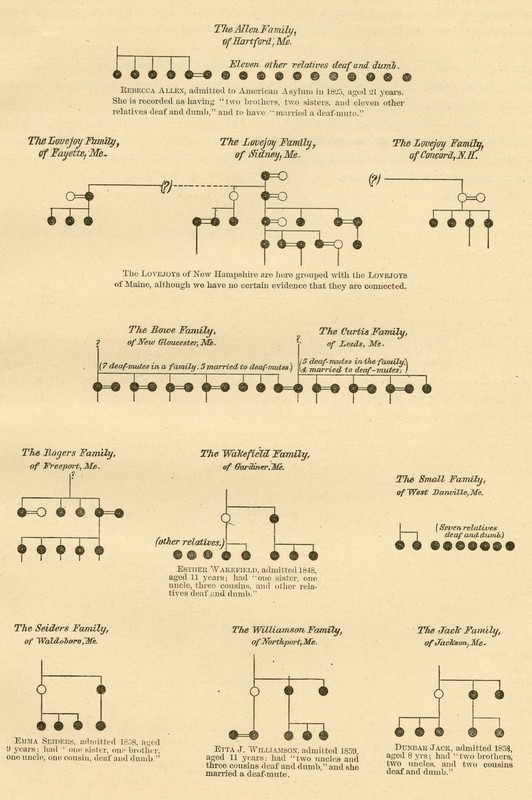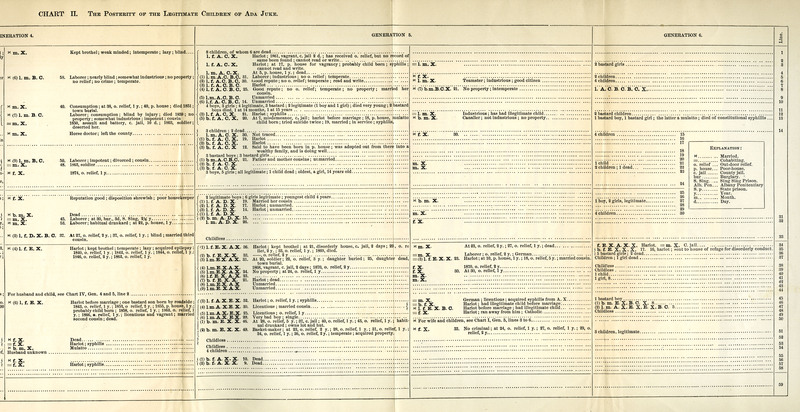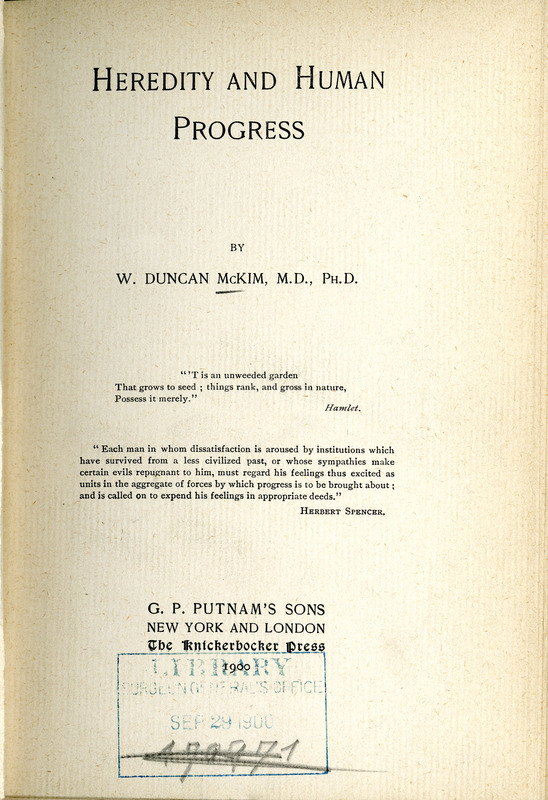Criminality and Family Traits
As part of his research on deafness, Alexander Graham Bell made statistical analyses of the deaf-mutes and determined that deafness was hereditary and that the number of intermarriages between deaf-mutes was high and growing. He concluded that “if the laws of heredity that are known to hold in the case of animals also apply to man, the intermarriage of congenital deaf-mutes through a number of successive generations should result in the formation of a deaf-mute variety of the human race…. The indications are that the congenital deaf-mutes of the country are increasing at a greater rate than the population at large; and the deaf-mute children of deaf-mutes at a greater rate than the congenital deaf-mute population.” Bell went on the speculate about the possibility of legislation to forbid the intermarriage of deaf-mutes but favored determining the causes of intermarriage and discouraging or removing them.
Bell presented his findings to the National Academy of Sciences on November 13, 1883, and his work was subsequently printed as part of the Academy’s Memoirs series. This copy of Bell’s Memoir formerly belonged to Dr. Henry Pickering Bowditch.
One of the first and most influential of the eugenic studies of a pseudonymous family, Richard L. Dugdale’s The Jukes traces the origins of imprisoned members of the same family back to the colonial period to examine inherited and environmental tendencies to poverty, crime, and disease. Dugdale estimates the financial cost to society of maintenance of the Jukes and concludes with, “Over a million and a quarter dollars of loss in 75 years, caused by a single family 1,200 strong, without reckoning the cash paid for whisky, or taking into account the entailment of pauperism and crime of the survivors in the next generation, and the incurable disease, idiocy and insanity growing out of this debauchery, and reaching into the third and fourth generations. It is getting to be time to ask, do our courts, our laws, our alms-houses and our jails deal with the question presented?”
Arthur H. Estabrook, a field worker of the Eugenics Record Office, later used Dugdale’s original research and traced Juke descendants to produce a follow-up study, The Jukes in 1915. Estabrook displayed photographs of the Jukes along with some of his data at the 1921 International Exhibition of Eugenics in New York.
Henry Herbert Goddard’s study, The Kallikak family, tracks 480 descendants of Martin Kallikak, known as the “Old Horror,” the illegitimate son of a feeble-minded girl. Among the descendants were alcoholics, prostitutes, epileptics, criminals, illegitimate children, and children who died in infancy. As Goddard states, “The surprise and horror of it all was that no matter where we traced them, whether in the prosperous rural district, in the city slums to which some had drifted, or in the more remote mountain regions, or whether it was a question of the second or the sixth generation, an appalling amount of defectiveness was everywhere found.” Legitimate Kallikak descendants, however, proved to be prosperous and upright citizens.
In this radical work, Washington physician, William Duncan McKim, proposed moving beyond sterilization of the “very weak and the very vicious” to liquidation by the state through the use of carbonic acid gas. In his chapter “A remedy,” McKim states, “The surest, the simplest, the kindest, and most humane means for preventing reproduction among those whom we deem unworthy of this high privilege, is a gentle, painless death; and this should be administered not as a punishment, but as an expression of enlightened pity for the victims—too defective by nature to find true happiness in life—and as a duty toward the community and toward our own offspring.” Numbered among McKim’s “unworthy” are imbeciles, epileptics, drunkards, murderers, house-breakers, and the insane.




